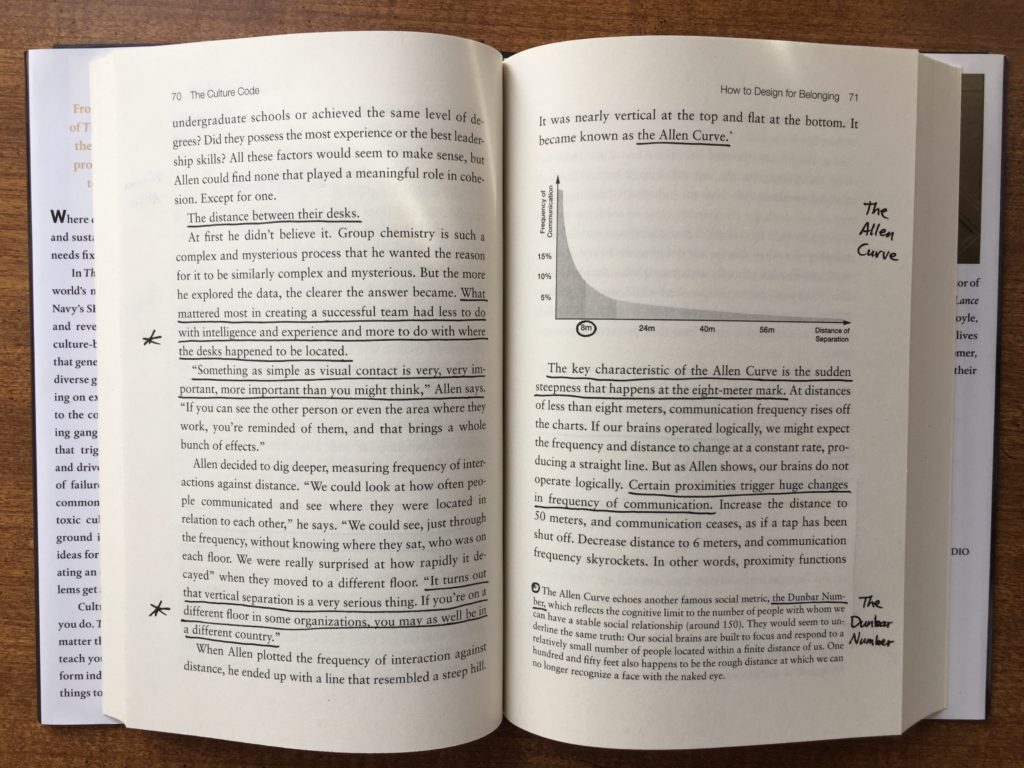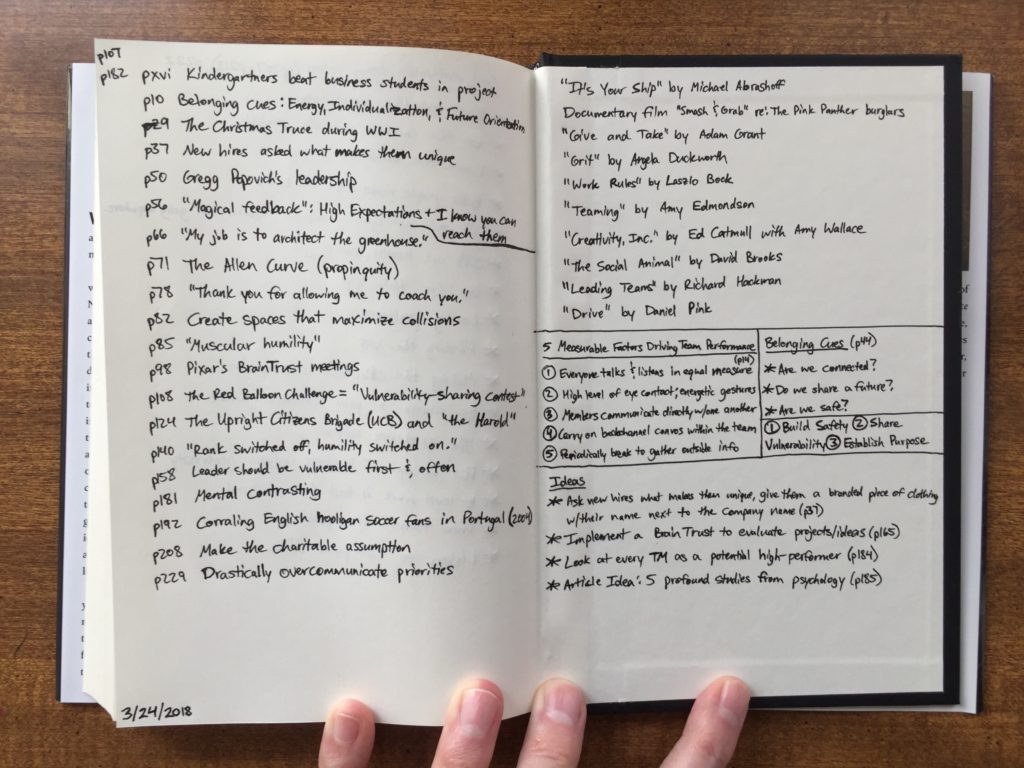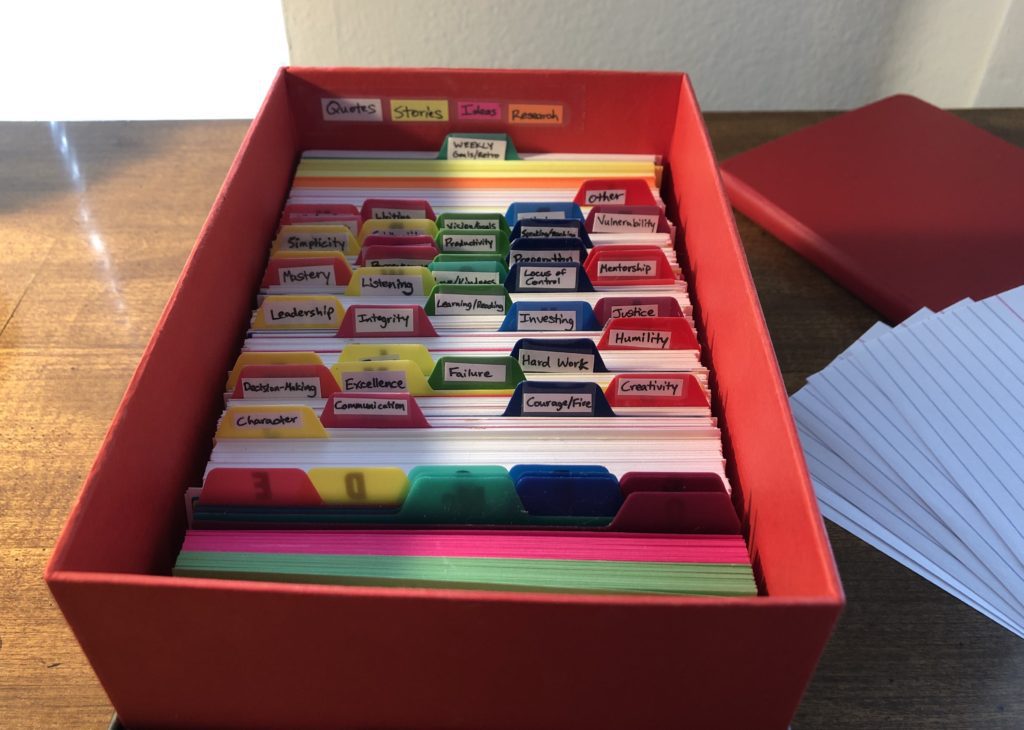7 Ways to Remember What You Read
I don’t have a great memory.
I forget the endings of movies I watched last week, forget what I was supposed to buy at the store, and forget people’s names immediately after meeting them.
However, I’m able to remember a remarkable amount of the things I read. Why? Because for the past ten years, I’ve been experimenting with tactics to remember lessons from the 600 books I’ve read in that timespan.
These seven tactics have worked for me. I think they’ll help you too.
1. Refuse to borrow books
When friends discover my love of reading, they instantly offer heartfelt recommendations of books I should borrow from them.
My answer is always no.
I refuse because I can’t write in borrowed books. I can’t make them my own. Every book I buy is an investment in my development. It’s a chance to build my personal library and — equally important — my antilibrary: my collection of unread books that remind me of all the things I have yet to learn.
Refusing to borrow books narrows my focus to only those books that are good enough to buy. Purchasing my own books also gives me the freedom to do many of the items below.
2. Underline like crazy
Novelist and philosopher George Steiner defined an intellectual as “quite simply, a human being who has a pencil in his or her hand when reading a book.”
I used to view books as hallowed ground. I wouldn’t consider writing in them any more than I’d consider putting a million bumper stickers on my car. (What are you people thinking?)
But then I realized that what made a book special was not its words, but what those words sparked inside me: ideas, inspiration, and action.
Writing notes in a book enables me to engage in a form of co-creation with the author. His or her work inspires me to brainstorm insights pertinent to my own life and immediately consider how I can put those ideas into practice.
My “marginalia” puts me in control of what I will learn from the book and how it will impact my life after I turn the final page.
Here’s what my typical marginalia looks like:

“In getting my books, I have always been solicitous of an ample margin; this is not so much through any love of the thing in itself, however agreeable, as for the facility it affords me of penciling in suggested thoughts, agreements, and differences of opinion, or brief critical comments in general.” -Edgar Allen Poe
But I think it’s best to take the concept of marginalia one step further…
3. Write in the back cover of every book
After countless times flipping through books to relocate memorable passages, I realized I could create a cheat sheet for myself in the back cover of each book.
The back cover is a great place to write notes that don’t fit in the margins. It’s also the perfect spot to list any overarching takeaways from the book.
As an example, here are my notes from The Culture Code by Daniel Coyle:

The picture above depicts several types of notes:
- Impactful quotes — The page numbers in the upper-left corner refer to pages containing quotes that inspired me.
- Key takeaways — I jot down things I want to remember from the book, along with their associated page numbers for easy reference.
- Book recommendations — Books are a great source of book recommendations. Authors cite sources and share their personal inspirations. When multiple authors reference the same book, I know it’s time for me to order that book.
- Ideas to try in my own life — Great books provide tangible ideas for work and life. Writing practical action steps helps me act upon what I read rather than just conceptually understanding the author.
Beyond serving as a cheat sheet, writing in the back cover of each book helps me remember what I’ve read. Studies have routinely shown that writing notes by hand boosts memory more than typing notes on a computer.
4. Create a “commonplace book”
A commonplace book is a place to compile knowledge for future reference. While many people use a physical book for this practice, any cataloging system can serve the same purpose.
Many people throughout history have used commonplace books, including Thomas Jefferson, Marcus Aurelius, Francis Bacon, E.M. Forster, H.P. Lovecraft, and Bill Gates.
My commonplace book (pictured below) is adapted from one used by bestselling author Ryan Holiday, who adapted his from Robert Greene.

For my commonplace book, I write quotes, stories, ideas, and research data on 3x5 cards. I label each card with a category, then sort the cards by category.
For example, I recently stumbled upon this awesome quote from Mark Cuban: “Work like there is someone working 24 hours a day to take it all away from you.”
I use white cards to record quotes, so I wrote the Mark Cuban quote on a plain white 3x5 card and labeled it with the category “hard work.”
A story about an entrepreneur learning from failure would go on a yellow card (the color I use for stories) labeled “failure.”
The entire setup cost me about $20. I bought a few packages of 3x5 cards and two batches of index card dividers, then turned an old Beats by Dre headphones box into my storage container.
Archiving memorable quotes and stories not only helps me remember what I read, but it also helps me write. For example, I published the lessons I learned in my first year of writing. My commonplace book category for “writing” provided much of the material for that article.
5. Read physical books instead of e-books
I remember my excitement a few years ago when I arrived home from Barnes & Noble with my new Nook Color e-reader. I was sure that device would transform my reading experience.
It did, but not in the way I expected.
One of the first books I read on my e-reader was The Maze Runner by James Dashner. After finishing the book, I raved about Dashner’s writing to a few friends. One of them had also read The Maze Runner, so we talked about the book’s chilling conclusion.
Er, I mean my friend talked about the conclusion. I couldn’t remember it. Embarrassingly, I had forgotten how the book ended.
The same thing happened to me a few other times with my e-reader. I began to feel like an idiot. My memory had never before failed me like that with books.
I turned to the all-knowing internet for answers. As it turns out, early studies suggest that people using e-readers absorb less information, get distracted by multitasking, and don’t enjoy the experience as much as those who read physical books.
“Whether they realize it or not, many people approach computers and tablets with a state of mind less conducive to learning than the one they bring to paper.” -Ferris Jabr
Although some studies have disagreed with those findings, my personal experience convinced me I should only read physical books.
6. Use a journaling app like Day One or Evernote
While digital notes don’t aid comprehension the same way handwritten notes do, they still offer a unique benefit of search-ability.
I often use the journaling app Day One to record block quotes and overarching concepts from books. My Day One notes eventually turn into book reviews and personal refreshers about key themes.
7. Talk about lessons learned
Often the best way to learn something is to teach it. I’ve found that I internalize lessons from books much better once I’ve had the chance to discuss them with others.
My first explanation of any book is often unpolished. As the words come out of my mouth, I realize I have failed to fully digest the author’s main points. However, by the second or third time I’ve discussed a book, I’ve crystallized my own understanding of the lessons and I’m finally able to articulate them.
“In learning you will teach, and in teaching you will learn.” -Phil Collins
The seven principles above primarily pertain to reading nonfiction, but I’ve started to use many of them when reading fiction as well. I’ve been impressed with the results.
What mechanisms do you use to remember what you read? Share your thoughts below.




